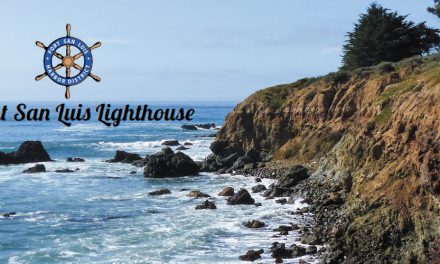Walking the Bob Jones Pathway towards Avila Beach, you will encounter an estuary where the freshwater reaches the ocean. The freshwater source, San Luis Obispo Creek, forms this estuary that is vital for the health of sea life and the watershed. The salty seawater and freshwater mix, creating a unique environment for plants and fauna to flourish. Traveling the Bob Jones Pathway, you will have the opportunity to catch sight of a great number of wildlife species within the estuary waterway. The environment provides a nursery ground for many birds, fish, and other animals. The area offers food, breeding places, and migration stops.
Estuaries are delicate ecosystems that provide essential habitats for living things. Avila Beach residents and its abundant visitors are fortunate to have such a beautiful area to observe. It will require more than your fingers and toes to count the number of water birds and other avians spotted during a viewing. The impressive, rarely seen owl-like Northern Harrier, which is listed on the California Bird Species of Special Concern, can be occasionally seen. The area is rich with life both beneath the surface and above the water. Some of that life is microscopic, yet critical to a healthy environment. The estuary serves as a valuable natural resource for all organisms that call it home.
The San Luis Obispo Creek corridor connects to a tidal estuary. The levels of the water are affected by tides. This is especially apparent during king tides. The tidal flow is easily witnessed by the bridge that crosses over the estuary on the Bob Jones Trail. Low tide reveals not only a substantial amount of the basin but plenty of round white objects. Although there are lots of waterfowl, those are not goose eggs. They are poorly aimed golf balls. Plenty of them too! One wonders if it should be designated a hard hat area.

During high tide, groups of fish are plentiful. Some fish attract audiences. Curious trail users are often heard debating the fish identity. Collections of large, striped mullets can be spotted throughout the estuary. Stripped mullets normally inhabit shallow brackish water. The elongated, bluish-gray, 9-to-12-inch fish is present in coastal ocean areas, such as estuaries. The two well-separated, dorsal finned fish are speedy navigators and tend to swim in large schools. An interesting behavior of the mullet is they are common jumpers. They leap out of the water and create a splash. The mullets provide a fun show to watch, but they are just one species that thrive in estuaries. Endangered species, such as steelhead trout and the 2-inch tidewater goby, are also present, but they are obviously more difficult to spot.
Intertidal zones provide a home to numerous specially adapted marine plants and animals. It is paramount to remember that people can affect the lives of these fascinating aquatic creatures. Building encroachment in and around estuarine environs not only disrupts habitat, but it leads to higher levels of pollution and contaminant buildup. Making conscientious decisions are critical to protect and maintain the health of estuaries. Responsible choices must be made to ensure that water quality will not be jeopardized or habitats transformed.
Why are estuaries of great importance? Why should we consider protecting them? Estuaries filter out pollutants and sediments from freshwater sources, such as creeks, streams, and rivers before they flow into the sea, delivering cleaner waters for marine life as well as humans. Over the years, the shape and location of the Avila Beach estuary has changed drastically. You can see the difference by simply scanning old historical photos. In the early 90s, the meandering loop and sandbar were displaced by development and construction. Land use modifications within an estuary’s watershed can impact the biological, chemical, and physical components of estuaries. Even subtle land modifications within an estuary’s watershed can alter erosion, which can affect sedimentation, water clarity, and bottom substrate. Demonstrably unintended consequences can then occur all along the food chain. Currently, there are 29 large estuaries throughout the United States that are protected and studied, including several in California. Let us strive to keep Avila’s estuarine habitats healthy so that future generations may enjoy the ecological community as they trek along the Bob Jones Pathway.






